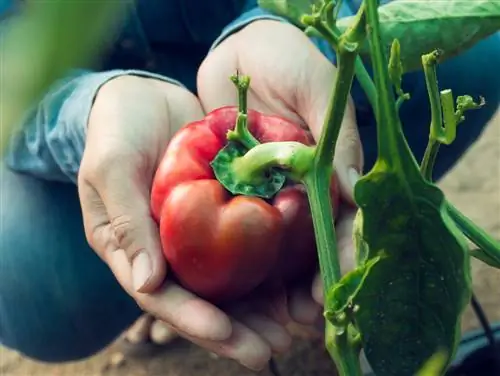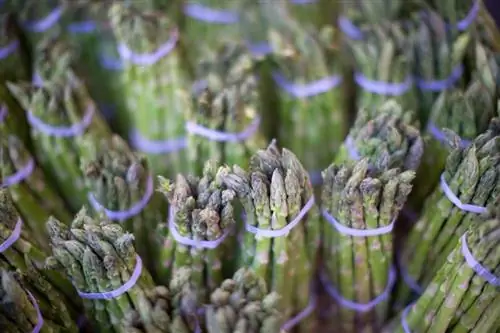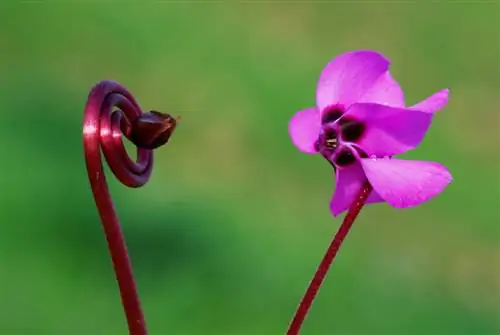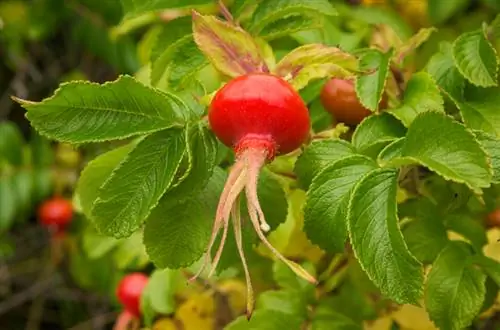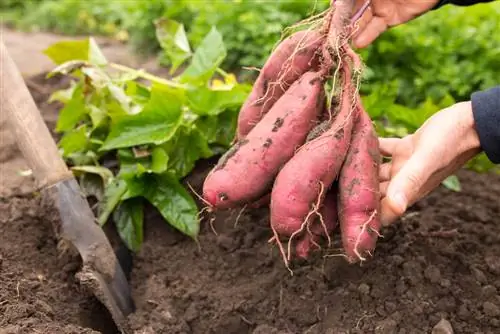- Author admin [email protected].
- Public 2023-12-16 16:46.
- Last modified 2025-01-23 11:22.
Peppers are a type of Solanum that originally comes from Central and South America. As early as 7,000 BC. People grew the vegetables in the 4th century BC. After the seeds were shipped to Europe, the crop took off. Today it is considered a popular crop that is cultivated in one's own garden.
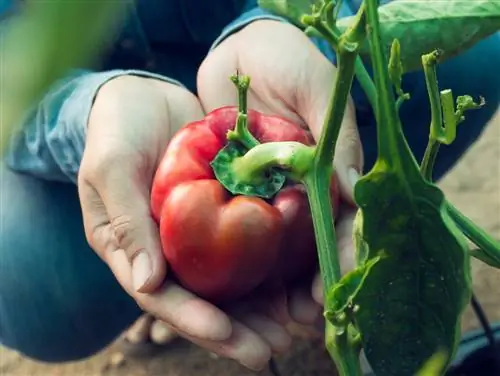
When is pepper season?
The pepper season begins in July and lasts until August, with the harvest of fully ripe fruits continuing until October. Early varieties can be harvested from June, while later harvests with covers are possible until November.
Garden season
Peppers are in season from July to August, with the harvest of fully ripe fruits extending into October. With a cover you extend the harvest window into November. Early varieties produce peppers ready for harvest from June, but you can harvest any perennial early, even if the vegetables are still green. It is characterized by a bitter taste.
Pepper varieties according to ripening times:
- 50 to 55 days: 'Yesil Tatli'
- up to 60 days: 'Ferenc Tender', 'He althy' and 'Tollis Sweet'
- up to 70 days: 'Giant Aconcagua' and 'Corno di Toro Giallo'
The optimal harvest time
You should only harvest the nightshade plants when the fruit color is fully developed. Small green spots indicate that the ripening process is not yet complete. Give the plant a few days.
It takes about three weeks for the sweetness to emerge and the coloring to fully develop. Red, yellow and purple varieties are ready to harvest when the outer skin is completely colored. Green specimens are not a separate variety, but rather unripe vegetables. You can let peppers that are harvested too early ripen.
Growing in the garden
Seeds can be grown between February and March in a mini greenhouse (€239.00 on Amazon) or in small seed pots on the windowsill. Swelling tablets made from coconut fiber are ideal for seeds because they are low in nutrients and store moisture. At the same time, you save yourself the trouble of pricking out, as you can plant the individual young plants directly into a larger pot.
Getting used to it
Since the nightshade plants are sensitive to cold, they are only allowed to migrate outdoors in mid-May after the Ice Saints. During the first week, place the plant pots in a protected and shady area on the balcony or terrace every day so that the plants slowly get used to the light conditions.
Preparations
Choose a sunny spot and amend the soil with compost. After loosening up the bed, dig planting holes about 50 centimeters deep, making sure there is a distance of 40 centimeters between the pepper plants.
Care
Supply the culture regularly with water and nutrients, although you should avoid nitrogen-based fertilizers. This leads to excessive leaf development. Special fertilizers rich in potassium, on the other hand, promote flower development and thus ensure a rich harvest.
Tip
Break out the leading shoot as soon as the perennial has grown 20 to 30 centimeters high. The first so-called royal flower is also removed so that the plant expands in width.

